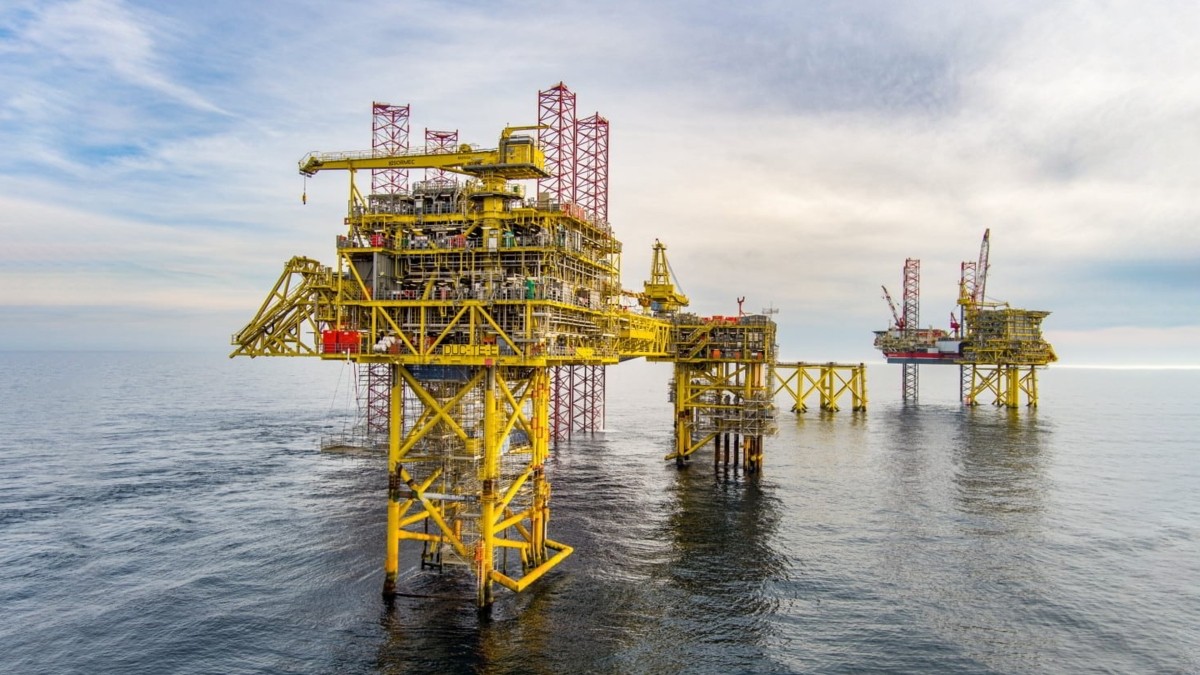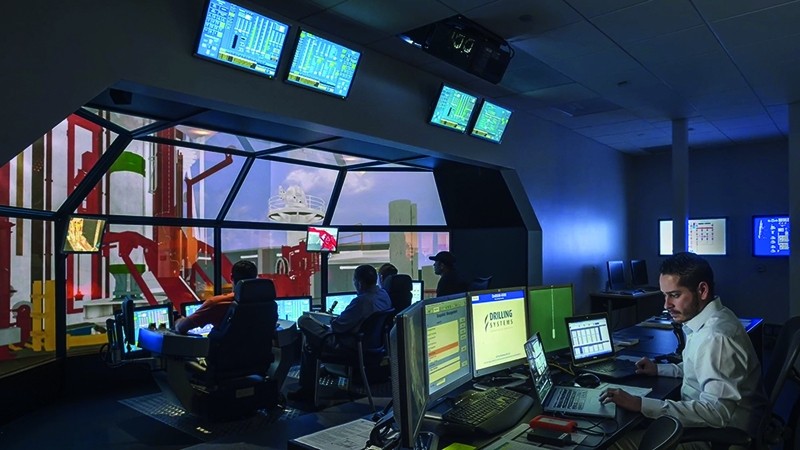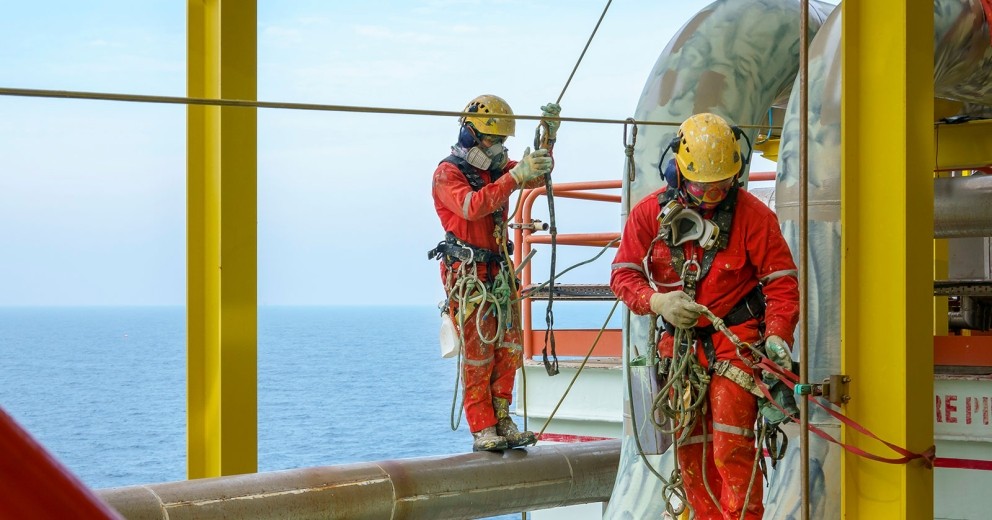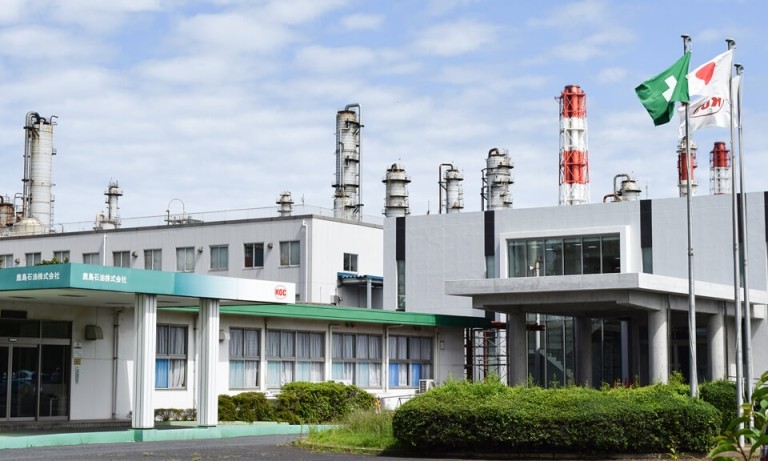
TotalEnergies Increases Safety with an Upgraded OT Network
Legacy technology on North Sea oil platforms is replaced to increase safety, network performance, and cybersecurity
Customer: | Industry: | Location: |
TotalEnergies | Energy | Offshore in the North Sea |

Allied Telesis supported every single stage of the project, from the initial study, during procurement, configuration, and testing, and providing after-sales support during installation and commissioning.
Technical Director, Process Safety Solutions UK,
TotalEnergies operates oil and gas platforms in the North Sea approximately 500 kilometers north of Aberdeen, Scotland. The platforms have an Integrated Control and Safety System (ICSS) running within its operational technology (OT) network, which combines elements of process control and functional safety into a single architecture. The network is absolutely essential to the safety and efficient operation of the critical infrastructure on the platforms.
Following equipment failures and concerns over availability of spares and support for the aging network infrastructure, putting safety and security first, the company commissioned an Obsolescence Study of the entire ICSS OT network. The end goal was to provide a reliable, supportable, and secure network for the remaining asset life.
The Obsolescence Study of the ICSS was conducted by Process Safety Solutions (PSS), a firm specializing in providing safety solutions, risk management, and consultancy services to the oil, gas, and other process industries. Headquartered in Aberdeen, PSS has a dedicated team of highly experienced engineers who form the local Center of Excellence for system development, support, and maintenance of various vendors’ technologies. Being product independent allows PSS to offer the best-fit solution to its customers’ problems.
With a team headed by Technical Director Andrew Thompson and Systems Manager Myles Gowen, PSS developed a full listing of all network connections forming the ICSS OT network. They populated the index from system configuration data, network drawings, and site visual inspections. The network devices identified during the development of the listing formed the basis of the obsolescence review. Each network device type was reviewed for the following:
- End of Life
- Support Availability
- Migration Paths
- Replacement Equipment
- Budget Cost of Upgrade

Complex Requirements for a New Network
Having made their full assessment of the existing equipment, PSS outlined requirements for a new network. It would need to operate with many legacy systems, so it had to have elements of backward compatibility while also offering the advantages of current technologies in terms of ease of configuration and strong security. This upgraded network would touch most parts of the platforms with multiple head end systems and 18 remote cabinets. Therefore, enterprise grade equipment with high levels of fault tolerance and resilience was a must.
“A complicating factor for this upgrade is that we couldn’t turn all the old equipment off at once to install the new network, as this would black out the rigs, and this was not an option,” says Gowen. “We had to work in stages and incorporate backward compatibility in the design so that the new kit could speak to the old kit, and the old to the new. This meant supporting some unusual protocols.”
PSS looked at viable options for the network equipment, starting with suppliers they had worked with in the past such as Cisco and HPE/Aruba. Although they had no previous experience with Allied Telesis, PSS included them in the evaluation process. This was a fortuitous inclusion, as a member of the Allied Telesis team had previously worked for Nortel, whose equipment was heavily entrenched in the existing network. This gave Allied Telesis an advantage in knowing how to set up communications with the legacy environment.
The final decision on the networking vendor came down to the quality of technical support as well as pricing. The Cisco solution was nearly five times more expensive than Allied Telesis, with annual subscriptions that proved to be too costly. Allied Telesis won the business for the technical strength and cost-effectiveness of its solution, as well as strong support from the company’s pre-sales engineers.
“Key factors in awarding the project to Allied Telesis were the pre-sales support during the study and assistance with developing the migration strategy,” says Thompson. “This allowed us to utilize a single manufacturer.”

Staging the Equipment in Advance Was Critical to a Successful Deployment
The overall network is comprised of multiple dual redundant networks, interconnected among three oil and gas platforms and serving over 400 nodes. These networks serve the platforms’ Distributed Control System, Emergency Shutdown Safety Instrumented System, Fire and Gas Safety Instrumented System, Electrical Control System, Multi Phase Pump Control System, and Alarm Management System. The upgrade project included more than 200 items of Allied Telesis hardware installed in 18 equipment rooms across the three platforms.
Before anything was deployed on the platforms, every part of the network configuration was tested at the PSS facilities in Aberdeen to ensure that the systems and architecture were going to work. “We basically did a type test of each piece of equipment in our office to give us the confidence that, when we went offshore for installation, everything would communicate as needed and we wouldn’t be missing any unusual protocols or anything like that,” says Gowen. “Allied Telesis was very helpful in this process. This simply wouldn’t have been possible with most vendors.”
This pre-deployment testing and staging was critical to a successful roll-out of the equipment on the platforms. PSS only had a two-week window to deploy everything during a planned maintenance shutdown period. What’s more, the installation had to happen in stages. “There wasn’t an opportunity for us to turn everything off and do a ‘rip and fit’ upgrade,” says Gowen. “We had to do it as one piece at a time, one switch, one bit of equipment at a time.” This is where the backward compatibility came into play. As new networking components went in, they had to interoperate with legacy pieces that had not been replaced yet. “It made matters more complicated, yet we planned well for it. We got everything done in the short shutdown window.”
The Systems Were Hardened for Cybersecurity
The new network vastly improves cybersecurity for the oil platforms. The Allied Telesis equipment allows for system hardening in line with IEC 62443, providing enhanced security including VLAN segregation, port blocking, and dedicated management ports. There is physical access control as well.
Media converters and racks are utilized to extend the Emergency Shutdown Safety Instrumented System and Fire and Gas Safety Instrumented System peer to peer communication networks between the various offshore modules.
A Successful Project, Start to Finish
The upgrade was completed on time, within budget, and with minimal disruption as the deployment fit into the tight two-week window. “The customer is happy,” says Gowen. “We did a post-project review with them, and they were just full of praise.”
And PSS is delighted with their experience working with Allied Telesis. “Their team was great to work with,” says Thompson. “When the project went live, they were very good at responding when we needed them. We encountered one unforeseen issue with an undocumented configuration of a third-party system on the network and Allied Telesis was amazing with their support throughout. We will certainly work with them again.”





